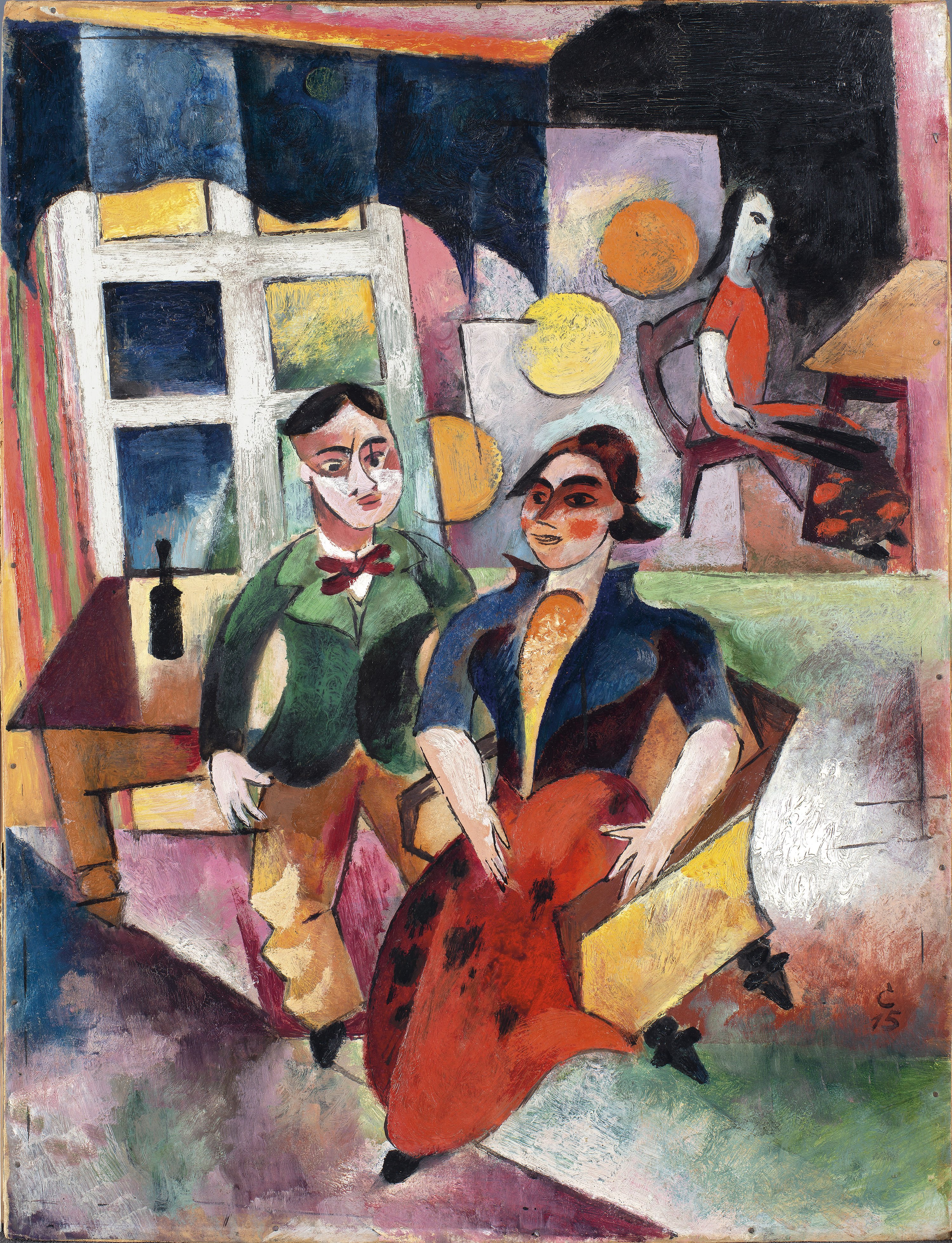Young Couple
Heinrich Campendonk painted Young Couple in 1915, when he was 25. Coming from Krefeld, the artist was linked to the group of "Rhine Expressionists" formed around August Macke and his cousin Helmuth Macke. But already in 1911 Campendonk had joined the Munich group "Der Blaue Reiter" founded at the time by Franz Marc and Wassily Kandinsky. Also, around 1915 Campendonk went through extremely opposite experiences. In February of that year, his wife Ada gave birth to a boy. But the artist must also have felt great sorrow at the loss of close friends in the war: August Macke died as early as September 1914 in Perthes-les-Hurlus (Champagne) and Franz Marc in Verdun almost two years later. In particular, the latter had had a strong influence on Campendonk's artistic career, and not only with regard to his representation of animals. The painter took part with great energy in the discussions involving the international vanguard of the time. Through W. Kandinsky, Marc's friend, he was introduced to the principles of abstract art. Like August Macke, in 1912 he studied Picasso and Braque's analytical Cubism, while also showing interest in the principles of Italian Futurism, which demanded the decomposition of the subject of the painting following the aspects of its internal dynamic forces and a rhythmic reorganisation of those elements in the image. As can be perceived in his representation of the "Young Couple", which also denotes the influence of Marc Chagall, for Campendonk Robert Delaunay's Orphism became a key experience, as it had also been for Macke.
At the time when he painted this work, the happiness of his family, under threat since the beginning of the war, was at the centre of his thoughts and emotions. The subject of the painting has to be understood in this context. The characters represented are not any couple, but the artist and his wife Ada. The couple have a central position and are looking at each other, both presenting a three-quarter profile. Their intimateness contrasts with a third person represented in a smaller scale, in profile, on the right hand side of the painting, in the background. It is a young woman, a fact that may suggest a possible widening of the family; but it may also only wish to hint at the opposition between isolation and company. The spatial arrangement is intentionally undefined. The interior of the room is represented by a sketch of the floor. A diagonal line crossing the bottom left hand corner creates spatial depth and separates the lighter and more clearly defined area of the background from the darker zone, characterised by broken shades. The rest of the objects in the painting are seen from the side, leaning slightly forward and lacking stability. Apparently, the woman is sitting comfortably in an armchair, but it does not give the slightest impression of being fixed; rather, it seems to be floating in mid-air. The position of the man is not clear either. The figure seems almost suspended: only the tips of his toes touch the leaning floor. The same can be said about the table with the bottle behind the man. The whitish light transforms his face into something like a mask. His almond-shaped eyes and its marked angular outline recall Picasso's heads in his cubist phase around 1909. Behind the man's head, a window lets in the light and darkness as far as the colour of the interior of the room. In the darkness of the night which limits the composition on the top right hand side, there is a light surface of a milky white colour, which recalls a door opening. The woman dressed in red is sitting at a table, her face and arms of a bright chalky white, perhaps lit by the moon; the chair and the figure seem to be flying through the air. Three circular shapes, in shades ranging from lemon yellow to Indian yellow, float across the bright whitish opening and come into the room, descending on the couple. Like soap bubbles, when they hit the edges of the objects, they blend with them and disappear. This visual representation of light is characteristic of Campendonk, who liked presenting his artistic motifs under the cosmic sign of what happens during the transition from night to day.
Ursula Heiderich





